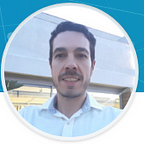Mentorship SaaS platform — A case study
1. Introduction: Empathizing with the user
This was an Ironhack project for the UX/UI Design program & Digital Product Manager . . The scope for the UX/UI process was a 2 weeks project interviewing HR managers to find pain points in workplace environment and after I developed all the business side during 3 weeks more (part time).
I decided to focus on onboarding processes but after sending messages to my Linkedin network I didn’t have too many answers from HR managers about this topic. I had the feeling that tech startups are growing too fast to take seriously onboarding processes. Then I changed the focus to interview tech workers to ask them about problems they had working. Some of these interviews gave me inputs like:
“Most companies in Spain don’t know how to retain talent”
“We had a mentorship program and it was very helpful to know how things work”
“I would like to know what the other departments are doing and how I can help them.”
“I felt frustrated on my previous job because I had a conflict with my boss and I didn’t know who to ask for advice”
“Start-ups are growing too fast. We don’t have time for onboarding processes”
I decided to focus on the inputs in black, for this reason I did an affinity diagram to narrow all the information that I had during the interviews and I learned how to use miro software.
I focused my research on resolving workplaces and integration issues to prevent worker’s burn out or career development success. Some companies assign you a buddy or a mentor the first weeks, but…It’s the right mentor for you? After researching about adaptation problems in companies and mentorship.
2. Defining the problem
I created a problem statements to empathize with my target:
“Brandon (junior employee) needs a mentor to coach him to resolve issues at work”
I created 2 User Personas, one for the mentor and other for the mentee:
But it was not enough. If my platform is a B2B SaaS I have to think about the buyer persona (the person who will decide to pay to acquire the SaaS). I didn’t create this user, but he/she has to be a C-level professional and…how we convince a C-Level to spend money in your product? With information and data that will help him to:
a) Save money
b) Earn money
c) Protect money
For this reason I did more research to gather information about benefits related to mentorship and worker adaptation:
- Onboarding programs helps to improve 2 ratings: Employee retention by 25% and employee performance by 11%
- 15% of employees quit due to lack of an effective onboarding program.
- Mentoring helps younger workers develop their talents.
- Pairing persons up from different department is an enriching experience for both sides.
(more info on: https://www.thebalancecareers.com/how-to-start-a-mentorship-program-4582328)
3. THE MVP PROTOTYPE AND ROADMAP
User story: As an employee from CSPMedia company, I want to find a mentor inside the company so that I can resolve internal issues at work.
For the MVP I have only developed (and due to lack of time) the mentee user flow.
The task is to use for the first time the Mentorship SaaS, create your profile, choose a mentor and to set up a meeting with him/her.
As this is a MVP the platform is not yet finished and for this reason we have to create a roadmap to continue developing the tool. I planned a 6 month roadmap to include all new features on the product backlog.
after testing the MVP the first time is that the profile screen asked too many information and was too big. For this reason I split the profile process in 3 screens. The first one with the biographical information, the second one with items about what the mentee wanted to develop in the mentorship program and the third screen with general questions. It’s important that mentor knows motivations and some personal information of the mentee to use as an icebreaker in the first meeting.
I didn’t plan that user was able to see some of the mentors before completing his profile, but on testing I received the feedback that you should give something of value before ask the user to spent 15 minutes completing his profile. For this reason I ideate a screen with some of the mentors to show the mentee that to spend 15 minutes in the process with be worthy.
Also, I didn’t think about an internal landing page at the beginning to have all the information summarized.
Here is the complete workflow (mentee):
5. LEARNINGS.
To focus on Visual Design was a personal challenge for me due that in previous projects I had the feeling that I didn’t succeed (but after reading some other UX/UI designers post about their first steps in the design career I know that is something usual to feel like that at the beginning and it’s a matter of time to improve your skills).
Here is some things that I learned along the process:
- Sizes and spaces are different developing a native app and a web app. I have to refactorize the design because I was used to app design and I used too big typography.
- Be faster doing research
- Get inspired by other websites(colors)
- Learn UX/UI softwares: Miro
- Having an organized layout in Sketch saves you a lot of time!
- Applying C.R.A.P. design methodology helps with Visual Design (small details matter!)
6. A project also for business
I used this project also as a final project for my master in Digital Product Management at Nuclio School and I also developed other concept more business related:
